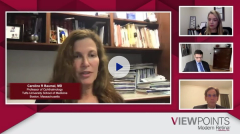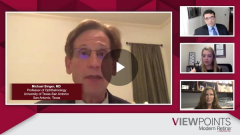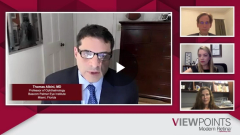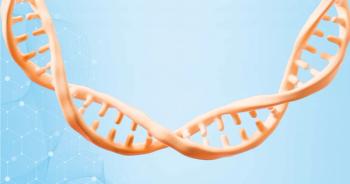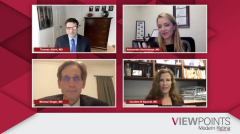
Role of biosimilars in management of wet AMD
Episodes in this series

Caroline Baumal, MD: I read a great article by Dr Rachitskaya. I was hoping that since we are still talking about anti-VEGF agents, could you quickly tell us the difference between biosimilars and generics? This is going to be a field that we are likely going to be dealing with soon. I read this article, and then I finally understood what the difference was.
Aleksandra Rachitskaya, MD: I have to give all the credits to my colleague [from the Cleveland Clinic], Sruthi Arepalli, [MD]. She is the lead author of that article, but thank you for the kind words.
Biosimilars are going to play a bigger role. They are already playing a bigger role in countries such as India. In fact, I was on a webinar on biosimilars, and the majority of people in attendance were not from the United States because it is so prevalent outside of the United States. I think the big difference to understand is that all the drugs that we use are biologics. They are derived from living organisms. Biosimilars are not supposed to be a carbon copy of your aflibercept or ranibizumab. They are supposed to be similar, and they are supposed to provide the same therapeutic end point, whereas the generic drug is just a carbon copy of the original drug. When a company develops biosimilars, they are not given a recipe by the original drug creators. They have to develop their own, and that process involves looking back at the original and analyzing how to create this biosimilar. Ultimately, although biosimilars are definitely cheaper than the original medications, they are still quite expensive to develop, and development is not fast nor inexpensive. The FDA requires trials to show that the biosimilars are noninferior to the original drug. Once again, it is not the same as bringing a totally new drug to the market, but there are development costs and other costs associated with the trials.
The patents are expiring on the drugs that we are using, and what we are grappling with now is how biosimilars will enter the market. The biggest question is going to be what is going to be the price point of these medications? Where are they going to fall in the armamentarium of what we use right now?
The other difference between the United States and some other countries is the use of Avastin. Avastin, as we have discussed, is affordable, readily available, and we use it often. For instance, in countries like India, they do not use Avastin as much, so their biosimilar price point is likely less than what we would see in the United States. It is going to be interesting to see this develop, but the big point to understand is that biosimilars are not generics. When compared to the generics, the process to create and approve biosimilars is different. It is not something that can happen overnight.
Caroline Baumal, MD: That was a great paper. It really informed me about the importance of the topic. I’m interested because it seems like there will be many different agents as a result of this phenomenon, but our fridges are only so big. When we consider how many different agents to stock and the approval processes of each agent, it is sure to be interesting in the future.
Newsletter
Keep your retina practice on the forefront—subscribe for expert analysis and emerging trends in retinal disease management.



